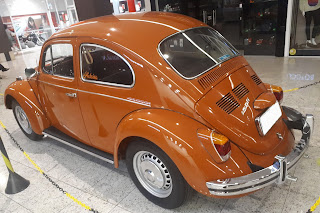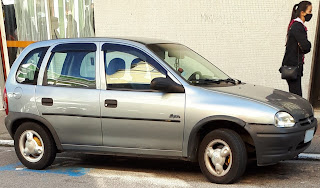Besides the cost of any tire matching the correct measures fitted to classic cars, to which a replacement may now be quite overpriced as they're now more valued for their historical significance and well-cared for by collectors instead of being steadily subjected to the harsh operating conditions some were meant back in the day, it's also important to consider the economical and political implications to get rid of the Chinese communist dictatorship and its filthy commercial warfare. I usually refrain from any usage of the word coolie/koelie due to its modern racist conotation being insensitive to both non-Chinese Asians and the Chinese victims of communism, but the labor conditions in China resemble in many aspects the so-called "coolie trade" on which Asian contract workers meant as a replacement for black slaves were fooled and enslaved by debt. In the middle of the crisis led by the outbreak of the Chinese coronavirus and the Chinese dumping of all sort of lower-quality manufactured items being a threat to the industrial output of other developing countries, including my homeland Brazil, it's worth to consider some ways to overcome the reliance on China which became too dangerous for the free world.
Sometimes it may seem pointless to suggest newer cars, to which the improved handling provided by a set or radial tires is often pointed out as a key to road safety and fuel-efficiency, could revert to bias-ply, but it's worth to look further on this matter before pointing it out as totally unsuitable. For instance the Thai version of the Toyota Yaris which is actually a rebadged Vios, is fitted with 185/60R15 tires both in Thailand and in Brazil where it's also assembled, and maybe it could benefit from those 13mm taller sidewalls of a Beetle-sized bias-ply to cope with rougher terrain conditions on those country roads and even on city traffic. Sure the lower speed ratings usually applied to bias-ply tires might be challenging to lead-footed drivers on the open road, but would in fact be more than enough to most average driving conditions. Concerns regarding the impact of bias-ply tires on fuel-efficiency might be somewhat easily addressed by the narrower tread and higher diameter of this specific set, not to get into how the CVT is good at keeping the engine at the higher-efficiency RPM band throughout most of the circumstances.Nowadays since even the entry-level cars are getting bigger wheels in order to provide clearance to the upgraded brakes, it's worth to notice the impact on the availability of smaller tire sizes which are often the only ones which fit without much effort into previous generations of economy cars still common to see roaming around in some countries where budget is one of the most relevant aspects on motoring. So there is a reasonable business case for regional suppliers to provide bias-ply tires catering to that market segment, not only because they're more affordable for the customer but also due to the lower production cost, thus rendering for instance 6.45-13 tires a suitable replacement for the 145/80R13 which are now on short supply in Brazil despite their former usage on popular models such as the Opel Corsa B locally rebadged as a Chevrolet. In the end, not only among budget and technical standpoints, bias-ply tires are still likely to remain a reasonable option in 3rd-world countries for a while.





No comments:
Post a Comment
Only comments written in English are published. Not so rigid about the grammar, but some regional slang should be avoided to make it clear and easily understandable.